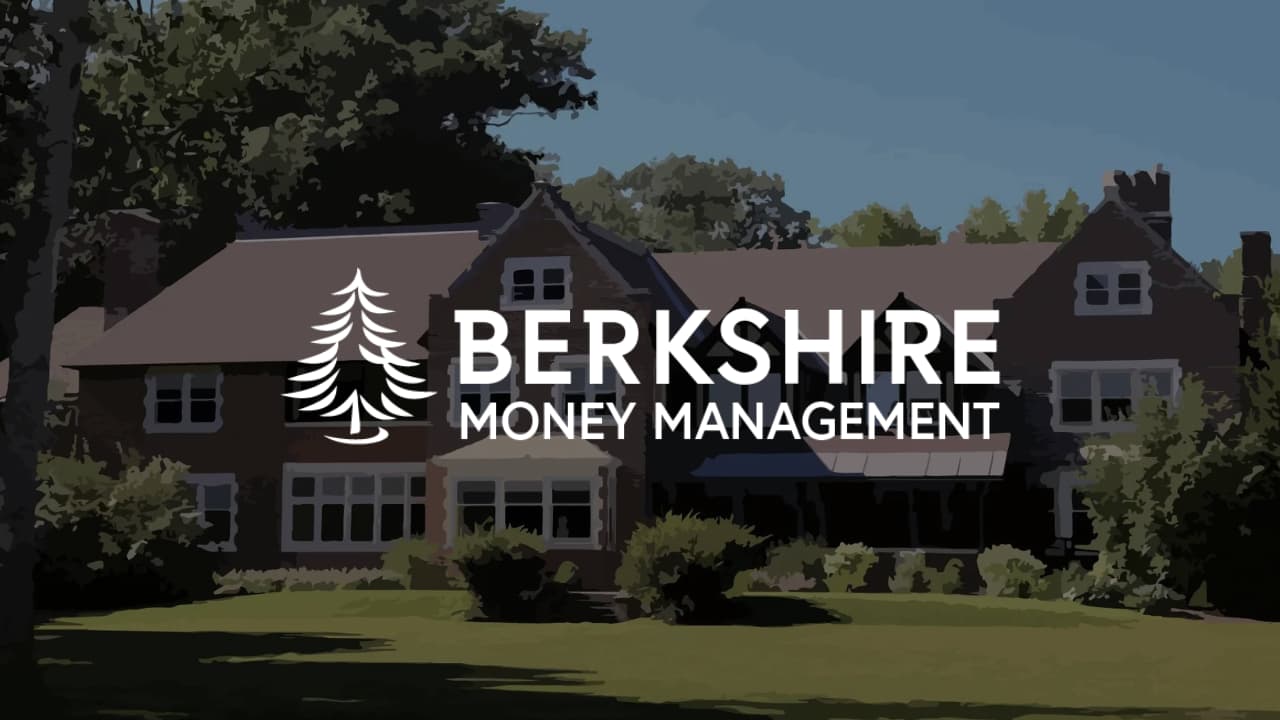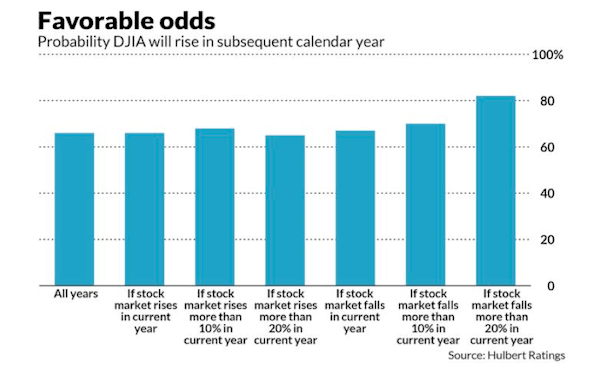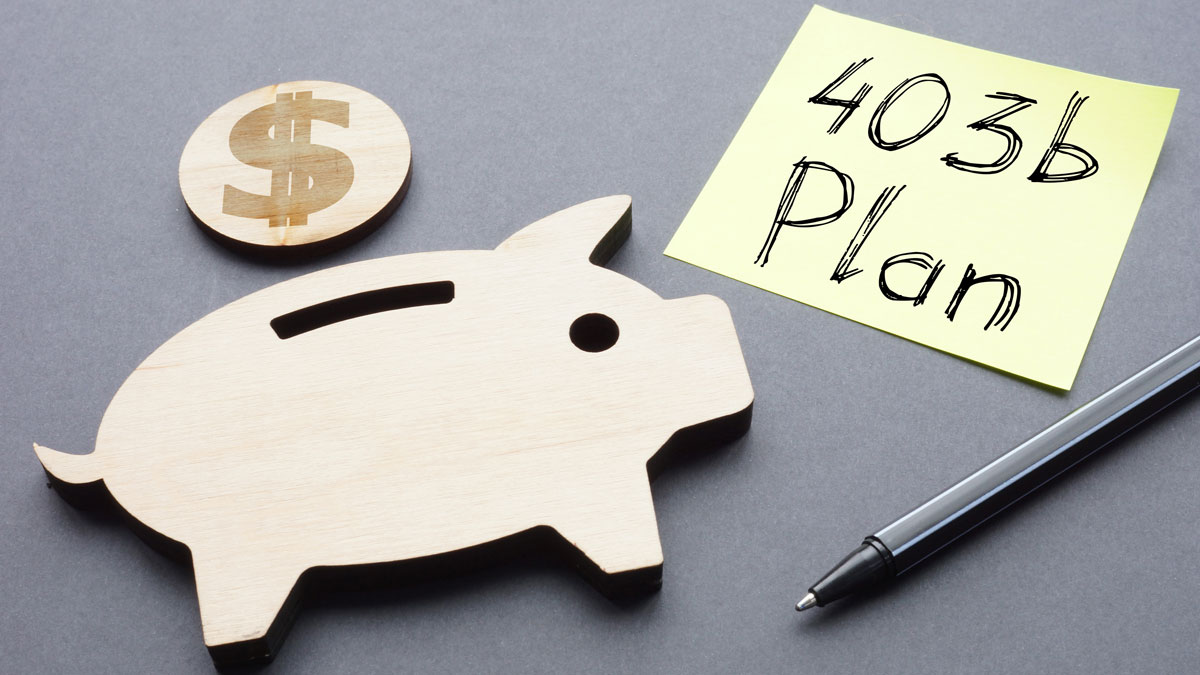A two-thirds chance the stock market will go up in 2022


Are you familiar with the hot hand fallacy? Gamblers fall victim to it when they convince themselves that wins or losses come in streaks, and those streaks stay that way because, well, just because they believe past performance is indicative of future results. In most cases, it isn’t.
Admittedly, sometimes past performance is indicative of future results. I’ve hired people who have shown a track record of progressive responsibilities — and with the proper support, they continue to do so. A good boxer often beats her next opponent because she has developed skills and knows how to put together a fight camp.
The converse to the hot hand fallacy is the “cold hand fallacy.” A gambler leaves one table for another in search of a d dealer that is paying out because they think the cold streak will continue where they are. An unreliable brother-in-law (not mine; mine is awesome) keeps messing up because he never learned to be responsible.
It turns out that we can predict some things. Sometimes.
However, people like to apply that guesswork to areas where and when it doesn’t fit: gambling, weather, traffic, jump shots. I am oversimplifying it since this isn’t a column on cognitive social bias. (But quickly, in sports, there’s some evidence that suggests an athlete that performs well can keep performing well because of the confidence it creates. In that instance, the hot hand fallacy is not a fallacy at all, but rather a self-fulfilling prophecy.)
I often see investors succumb to the hot hand fallacy. In my early 20s, I read a Harvard University study about how investors frequently bought stocks and mutual funds that had performed well the previous year. Harvard concluded that there was no evidence supporting this was a winning strategy. Subsequent studies have supported the notion that it’s generally not a winning strategy to buy last year’s stock market winners.
The data analytics firm Morningstar, which tracks mutual funds, compared funds that had the most inflows with those that had the least inflows. Think of them as loved funds versus hated funds. Loved funds were those investors bought the most of, and hated funds were those investors sold most heavily. Investors loved the ones that recently had good returns, and they hated those that recently had weak ones. In other words, they bought winners and sold losers. However, the three most hated categories of funds had beat the average fund 75 percent of the time and had beat the most loved funds 90 percent of the time.
Sometimes the hot hand fallacy becomes a self-fulfilling prophecy. It’s hard to justify the price of a Dogecoin, but people buy it because it did, in fact, go up. That keeps pumping up the price. However, generally, buying an investment because it went up isn’t an intelligent investment strategy.
I bring up the fallacy because, barring a last-minute calamity, the S&P 500 stock market index will be up double digits for 2021. That will make it the third year in a row. Because of that, some people might expect the stock market to jump double digits in 2022. Maybe. Gains in the mid-to-high single-digits feel more likely. (Not that I would be so foolish to predict the precise return on dates as arbitrary as from December 31, 2021–December 31, 2022.)
The average Wall Street forecast for S&P 500 earnings growth for 2022 is about 9 percent, down from what will likely be nearly 50 percent for 2021. I think 9 percent is too optimistic, but let’s go with it. That would put corporate earnings for S&P 500 companies at about $221 for 2022.
Assuming the multiple on corporate earnings remains as is, that translates to a 9-percent gain for the stock market. However, most investors will want to pay less for 9-percent growth than 50-percent growth. Also, as I explained last week, I expect interest rates will rise. Higher interest rates mean the present value of future earnings will fall.
Depending on how you want to measure earnings (believe it or not, there’s a few ways to measure corporate profits), the price-to-earnings (P/E) multiple of the S&P 500 is about 23. Slower earnings growth and higher interest rates should reduce the P/E. Suppose the P/E drops from 23 to 21; that only puts the S&P 500 at 4,641 ($221 of earnings times 21). I’m writing this column before Christmas 2021, and practically anything could happen to the stock market by the time it is published. As I write, 4,641 on the S&P 500 is a mere gain of one-half of one percent for all of 2022. Better than nothing, I suppose.
That’s the thing, though — the stock market prices in the future, not the past. We can’t rely on the hot hand fallacy to trick us into going all-in if that’s not what our financial plan calls for. The good news is that, historically, since 1896, there is roughly a two-in-three chance the stock market will rise in a subsequent calendar year (2022) despite gains or losses in the current year (2021).

In 2022, I expect corporate earnings to rise and economic growth to continue, albeit both at a more moderate rate. Prices of goods and services will remain high, but inflation growth should subside. These should support stock prices.
The Federal Reserve will remain accommodative, but less generous than it has been. The Fed, and interest rates, will be the main tailwinds for 2022 (he said while side-eyeing COVID-19 variants). The Fed will be the deciding factor between a potential stock market loss and a nearly double-digit gain. Most investors have no reason to go to cash now, but there may be one or two to worry about in 2022. Happy New Year?
Allen Harris is the owner of Berkshire Money Management in Dalton, Mass., managing investments of more than $700 million. Unless specifically identified as original research or data-gathering, some or all of the data cited is attributable to third-party sources. Unless stated otherwise, any mention of specific securities or investments is for illustrative purposes only. Adviser’s clients may or may not hold the securities discussed in their portfolios. Adviser makes no representations that any of the securities discussed have been or will be profitable. Full disclosures. Direct inquiries: [email protected].
This article originally appeared in The Berkshire Edge on December 27, 2021.
Allen is the CEO and Chief Investment Officer at Berkshire Money Management and the author of Don’t Run Out of Money in Retirement: How to Increase Income, Reduce Taxes, and Keep More of What is Yours. Over the years, he has helped hundreds of families achieve their “why” in good times and bad.
As a Certified Exit Planning Advisor, Certified Value Builder, Certified Value Growth Advisor, and Certified Business Valuation Specialist, Allen guides business owners through the process of growing and selling or transferring their established companies. Allen writes about business strategy in the Berkshire Eagle and at 10001hours.com.







